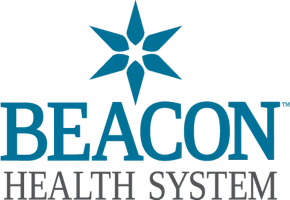Throughout my career in managed care and workers’ compensation, I’ve worked alongside carriers, TPAs, bill review companies, and medical providers. Over time, I’ve seen plenty of innovation aimed at improving speed, accuracy, and efficiency in an outdated and highly administrative system.
But one thing has remained constant – when it comes to payment of medical bills; the advantage lies squarely with the payers.
Insurance companies and self-insured employers have extensive resources and sophisticated tools to control costs. Among the most powerful – and least understood – is Professional Review, also known as Nurse Audit or Nurse Bill Review.
What is professional review?
Professional Review began in the 1980s, when nurses conducted on-site audits of hospital bills, reviewing records, coding, and clinical justification for services. Today, it’s a standard component of nearly every major payer’s cost-containment strategy.
Most workers’ compensation bills pass through automated bill review systems where fee schedules, PPO discounts, and negotiated settlements apply. Once those are processed, certain bills are flagged – often based on charge thresholds, DRGs, or service types – for deeper scrutiny by a nurse or physician reviewer.
These clinical reviewers evaluate medical necessity, coding accuracy, and relevance to the compensable injury. Their findings often lead to additional reductions that can far exceed state fee schedule or PPO discounts.
And while those reductions appear on an EOB with only a cryptic reason code, the financial impact can be staggering.
Why it matters
Unlike statutory or contractual discounts, professional review reductions exist in a gray area. They’re not tied to regulation or fee schedule, yet they are applied with equal authority.
Hospitals and providers – especially those less familiar with the intricacies of workers’ comp – often struggle to identify or challenge these reductions. Some payers even embed professional review cuts within other discount categories, obscuring their true source and making reconciliation nearly impossible.
This lack of transparency turns professional review into what I often call a “hidden fee schedule.” It’s a powerful cost-containment tool for payers and a major profit center for bill review vendors.
What hospitals can do
Hospitals can’t stop professional review, but they can mitigate its impact:
1. Train staff to identify professional review reductions early.
Many appear only as small reason codes on EOBs. Knowing the telltale signs helps prevent missed opportunities to appeal.
2. Request full justification from the payer.
Ask for the professional review findings or nurse audit report. Some vendors will provide documentation or even allow discussion with the reviewer.
3. Engage your own clinical resources.
Bring in a nurse or physician familiar with occupational injury claims to assess the medical rationale and prepare a rebuttal.
4. Appeal quickly and clearly.
Once you understand the reviewer’s logic, issue a formal, clinically supported appeal. If you face resistance, escalate through the bill review company, carrier, or state board.
5. Partner with experts.
A strong workers’ comp billing partner can help identify these reductions, pursue appeals, and recapture underpayments effectively.
The bigger picture
At my company, we manage over $1.6 billion in workers’ compensation hospital bills annually. Professional review reductions appear on nearly every hospital bill we process.
Many of these adjustments are legitimate – but many more are excessive, inconsistent, or unjustified. The system incentivizes aggressive review: while fee schedule reductions might earn bill review companies’ pennies per claim, professional review cuts can generate fees hundreds of times higher.
For hospitals, that means substantial lost revenue if these reductions go unchallenged.
Final thoughts
Workers’ compensation billing is complex, and payers have invested millions to ensure they control the process. But understanding how professional review works – and putting systems in place to catch and challenge unwarranted reductions – can dramatically change outcomes.
Hospitals that treat these audits as a core part of their revenue integrity strategy, not an afterthought, stand the best chance of getting paid what they’re rightfully owed.





























